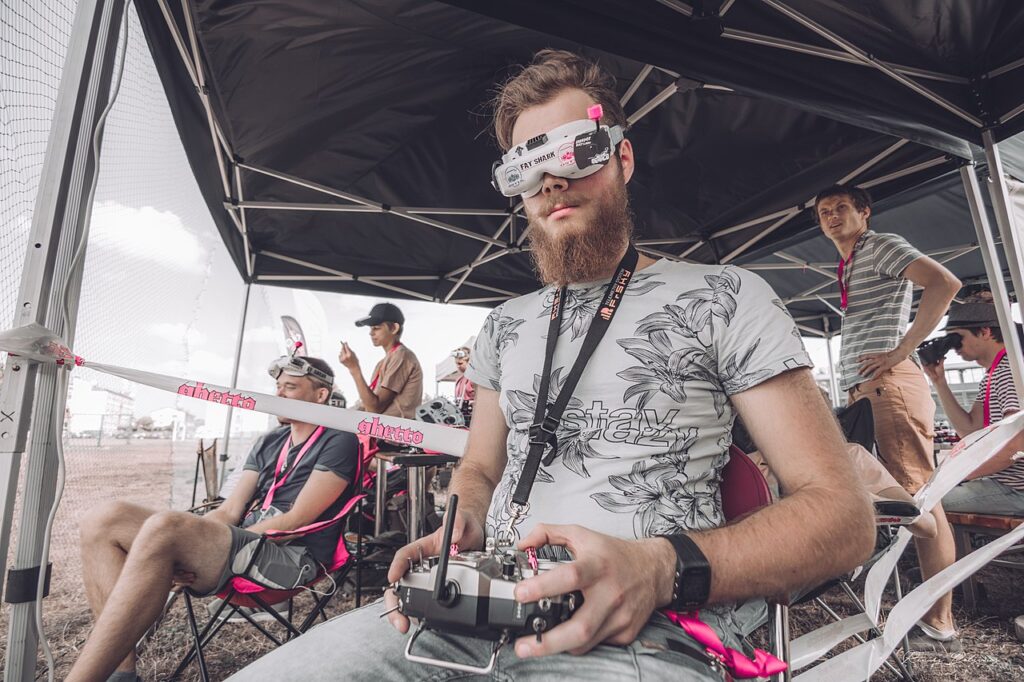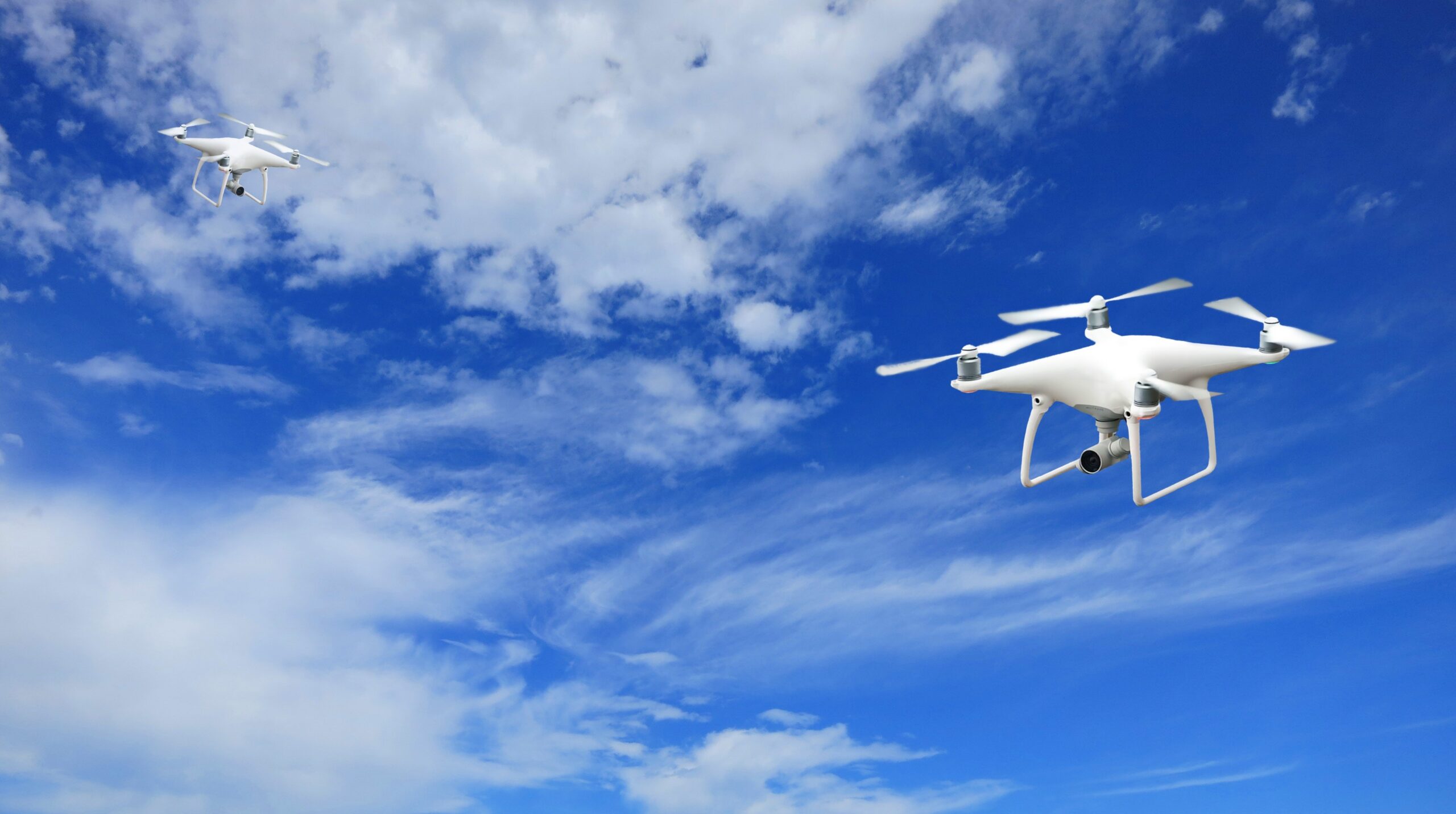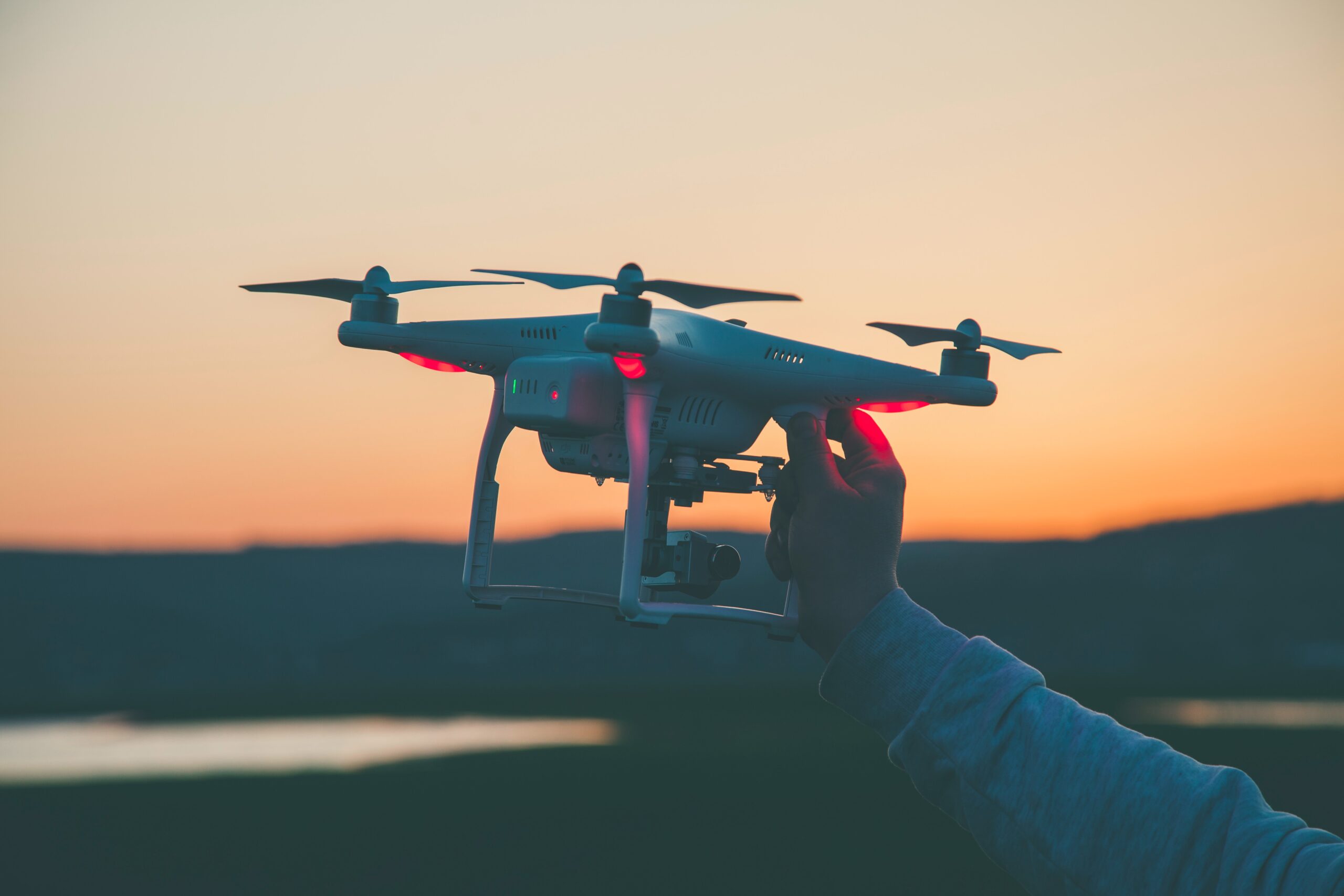Drone sports or first-person view (FPV) sports has been steadily growing its fan base in recent years because of its use of technology. It was first used in cinematography to capture high-speed chases. Later on, people used it as a hobby. However, these days, it is now a well-attended sport event.
In FPV, the pilot or a rider remotely controls the drone using head-mounted virtual reality glasses such as goggles that display real-time action feed from the drones. This is an amazing technology that combines the virtual world with physical reality. These glasses give the pilot of FPV an experience as if he is actually piloting the plane from the inside similar to flying a full-size aircraft! Some goggles have head tracking, band setting, receiver diversity, and multiple frequency setting. Its digital video recorder is able to give a high-definition digital video. Of course, the more bells and whistles there are, the more expensive the item. Inflight information gathered are then used by the pilot to the best flying style. Sometimes, spectators are also encouraged to wear these FPV goggles.
The Main Parts of FVP
Most FPV drone competitions have two main parts. First, the race based on speed and accuracy which is also known as Time lapse or Time Attack. The fastest drone wins in this category. The second division is the freestyle exhibition wherein the pilot showcases his skills and ability in an air show. Examples of these sports are drone racing and drone soccer.
Drone racing is an e-sport that is inclusive. Anyone and everyone can play this game. Age or physical disability is not a hindrance. This appeals to fans because of its use of the latest technology. Other than this, it is dynamic and has plenty of challenges. Research and development, especially in aeronautical engineering and programming, is at its core. There is plenty of knowledge and skills put into finding the right balance of speed, weight, and battery to achieve peak performance levels during competitions.
Any drone could be used to race, but FPV racing leagues has required drone standards. Most of the time, these drones are built by the pilots themselves to achieve the maximum speed and agility possible. These drones are separated into either winged craft or rotorcraft. This is then further categorized into size and power. Each category is clearly defined by MultiGP.
Quadcopters are the most popular choice of racing drones. These are unmanned aerial vehicles (UAV) with four arms or booms configured in an H-pattern configured to thrust the drone forward, not up. The multiple rotors generate lift to enable the aircraft to fly. It is a vertical take-off and landing (“VTOL”) drone which makes it easy to be launched in restricted spaces. The shorter diameter of the propeller gives it a smaller frame. This results in increased acceleration. Because it is gyro-stabilized, it is able to fly smoothly even in windy conditions. These racing drones can fly more than 120 kilometers per hour with amazing maneuvering abilities, according to Drones Gator.
Pilots need to match this speed with quick reaction time as well as good hand and eye coordination.
The easiest and cheapest way to learn how to fly an FPV is through a simulator. Through this, you can learn without the risk of crashing your expensive drone. You will also be slowly gaining confidence to fly a real one in a matter of a week or two.
Racers navigate around three-dimensional courses. Courses differ depending on the race organizer. In Fédération Aéronautique Internationale (FAI) Drone Racing, a maximum of six radio-controlled drones race around a closed circuit navigating through gates and obstacles. Obstacles can be in the form of hurdles, ladders, and elevations, to name a few. The goal is to arrive at the finish line as fast as possible. The race generally lasts three minutes.
Drone racing first started in Karlsruhe, Germany, in 2011 when amateur drone pilots had semi-organized races. From that backyard friendly competition, this sport has now a governing body under the FAI or World Air Sports Federation. The FAI is a non-governmental and non-profit international organization founded in 1905 to regulate the sports of flying.
It advocates for furthering aeronautical and astronautical activities worldwide, ratifying world and continental records and coordinating the organization of international competitions.
Today, it is the world governing body for air sports like aerobatics, aeromodeling, astronautics records, ballooning, general aviation, gliding (sailplanes), hang gliding (including paragliding), microlight aircraft, parachuting, and rotorcraft, including drones or unmanned aerial vehicles among other with over 100 organizations affiliated with it. It is recognized by the International Olympic Committee (IOC).
The FAI World Cup is a second-category event based on individual participation. This means that there is no national team representing a NAC). The requirement for joining the competition is a valid FAI Sporting License or FAI Drone Permission. Two Drone Racing World Cup events is allowed to be organized every year for any country.
Points are allocated to participants who have flown from at least two different countries and would depend on the placement in the event of the said competitor. There are four categories and these are Women, Juniors, General Individual, and National Teams.
FAI Drone Racing Competitions
The FAI holds a yearly World Cup competition but it was halted for three years due to the coronavirus pandemic. However, it made a come-back in 2022 after a three-year gap due to the pandemic. According to FAI, there were 171 pilots who participated, mostly men. At the beginning, there were 14 Drone Racing World Cup events (Challenger Series) published on the FAI Calendar for the year 2022.
Ranking for each competitor was based on three events of different countries.
The World Drone Racing Championship award was given to fourteen-year-old MinJae Kim from South Korea, a report from Korean Times said. He was followed suit by Minseo Lee, also a Korean, and Dimo Shterve from Bulgaria.
Interestingly, the 2023 FAI World Drone Racing Championship is set in Korea on October 6-9 at the Chunnhyangol Stadium in Jeollabuk-do with a prize pool of $100,000. Co-hosting the said event is the Korea Aero Models Association.
In the end, the continued staging of FAI Drone Racing World Cup makes it as one of the much-awaited events for all drone racing enthusiasts across the globe.


